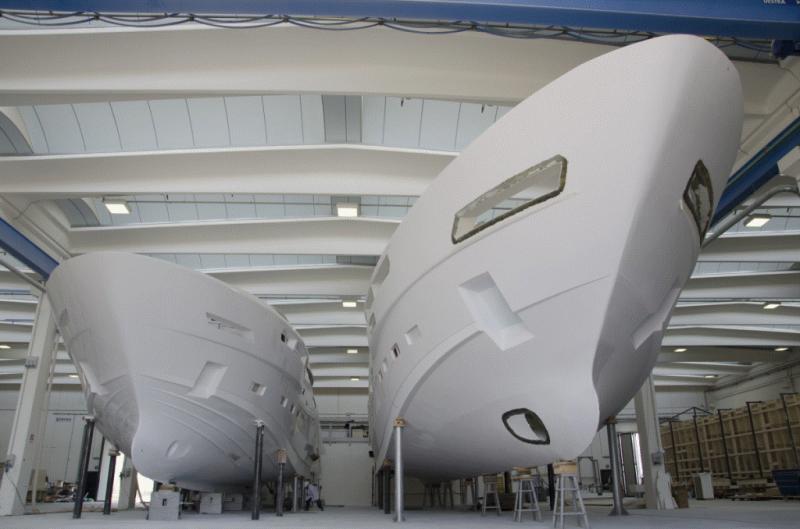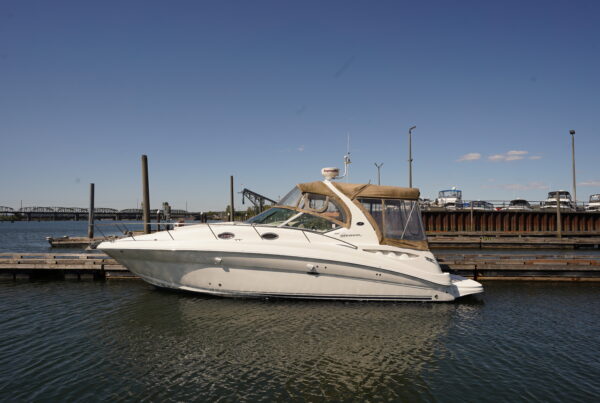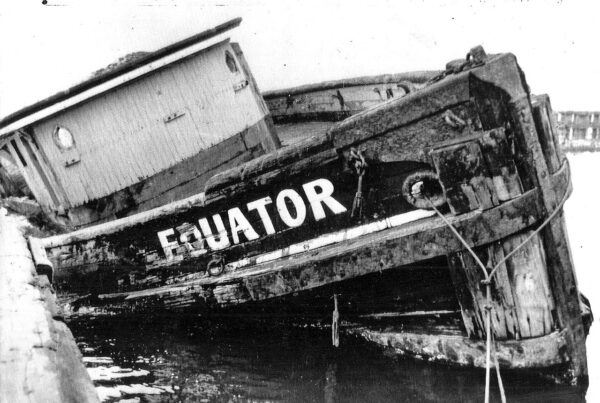Introduction:
In the vast expanse of the world’s waters, a quiet revolution was underway. A once humble material, fiberglass, emerged from obscurity to reshape the boating industry. With its unparalleled versatility and durability, fiberglass boats quickly captured the hearts of boating enthusiasts worldwide. This article delves into the history of fiberglass, explores its initial boat designs, and highlights how it triumphed over traditional wooden and steel vessels, ultimately becoming the material of choice for recreational boating.
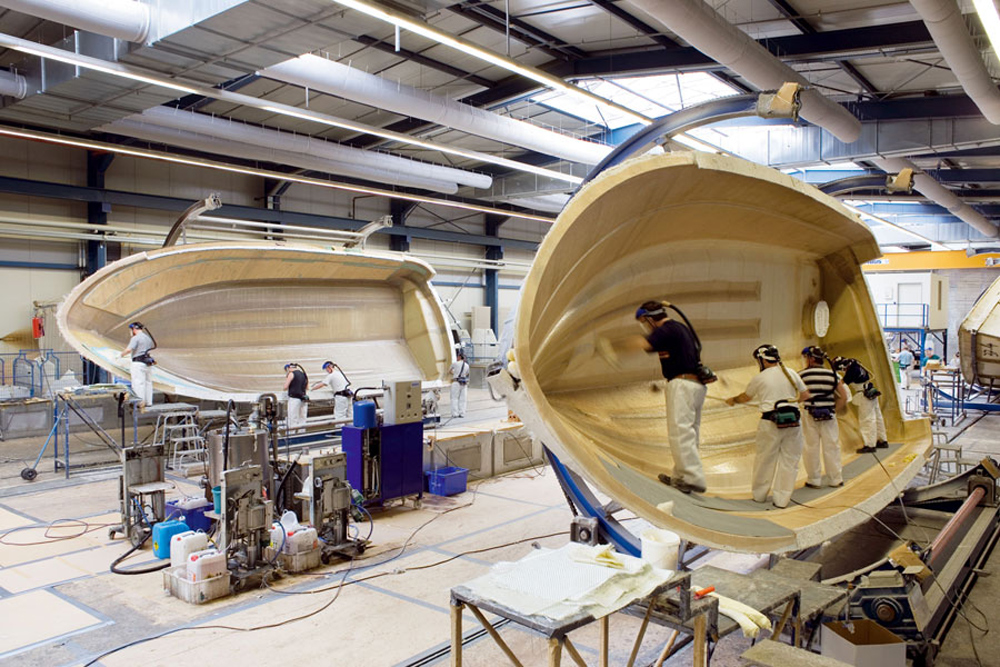
The Birth of Fiberglass:
Fiberglass’s origins can be traced back to the early 20th century when Dr. Dale Kleist, a researcher at Owens-Illinois, made a groundbreaking discovery. In 1932, Kleist stumbled upon the combination of glass fibers and resinous substances, resulting in a strong and lightweight composite material known as fiberglass. This remarkable substance possessed qualities that would soon revolutionize the boating industry.
Dr. Kleist’s discovery stemmed from his observation of the glass-making process. He found that heating glass could transform it into thin, fibrous strands called filaments, which were incredibly strong and flexible. By combining these glass fibers with resins like polyester or epoxy, Kleist created a composite material that was lightweight, corrosion-resistant, and mechanically robust.
Owens-Illinois recognized the potential of fiberglass and invested in further research and development. They refined manufacturing processes and explored techniques such as hand-layup and fiberglass molding to improve its properties.
Initial Boat Designs:
The impact of fiberglass extended beyond boating, finding applications in various industries. However, it was the boating industry that experienced a significant transformation. Fiberglass offered superior strength, durability, and resistance to rot and weathering compared to wood and steel. Its low-maintenance requirements and increased lifespan made fiberglass boats economically viable and appealing to boat owners.
Fiberglass allowed designers to break free from the constraints of traditional materials. Its flexibility facilitated intricate and innovative boat designs with sleek and aerodynamic hulls. The monolithic construction of fiberglass hulls minimized leaks and enhanced structural integrity, providing a safer and more enjoyable boating experience.
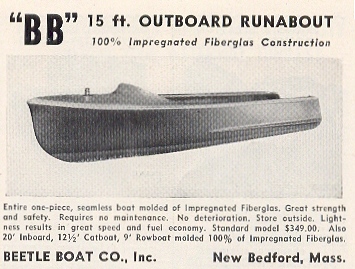
Fiberglass found its earliest applications in small, experimental boats. One of the pioneers in fiberglass boat production was the legendary American designer, Carl Beetle, who created the Beetle Boat Company in 1948. Beetle’s 13-foot-long “Beetle Cat” was one of the first commercially successful fiberglass boats. Its sleek design and excellent performance quickly garnered attention from boat enthusiasts.
With the success of the Beetle Cat, fiberglass boat manufacturers began experimenting with larger designs. In the 1950s, Ray Greene, founder of the Owens-Corning Fiberglass Corporation, introduced the first mass-produced fiberglass boat: the Owens-Corning Fiberglass 17. This 17-foot runabout showcased the immense potential of fiberglass construction, offering a lighter, more durable, and low-maintenance alternative to traditional wooden and steel vessels.
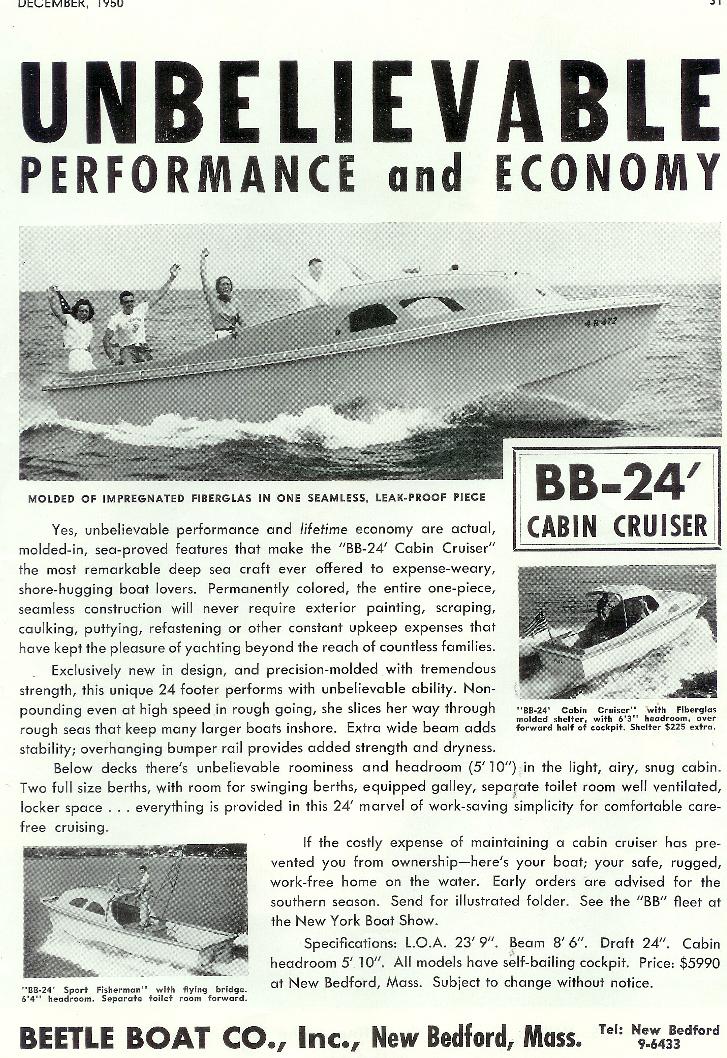
Fiberglass vs. Traditional Materials:
The rise of fiberglass was not without resistance. Skeptics initially questioned the durability and seaworthiness of these novel boats. However, fiberglass boats soon proved their mettle in various ways. Unlike wooden vessels, fiberglass boats were impervious to rot, weathering, and marine parasites. They were also resistant to fire and required minimal maintenance compared to their wooden counterparts. Moreover, fiberglass construction techniques allowed for seamless, monolithic hulls that reduced the risk of leaks and improved structural integrity.
As fiberglass boat designs continued to evolve, their performance capabilities surpassed those of wooden and steel vessels. Fiberglass boats offered superior strength-to-weight ratios, enabling higher speeds, improved fuel efficiency, and enhanced maneuverability. These qualities, combined with their aesthetically pleasing designs, made fiberglass boats highly desirable among recreational boaters.
The Triumph of Fiberglass:
By the 1960s, fiberglass had experienced a remarkable ascent in the boating industry, solidifying its position as the material of choice for boat construction. Esteemed manufacturers like Chris-Craft, Bertram, and Boston Whaler recognized the potential of fiberglass and made a decisive shift from traditional materials to embrace this revolutionary innovation. They understood that fiberglass had the power to redefine the industry’s landscape.
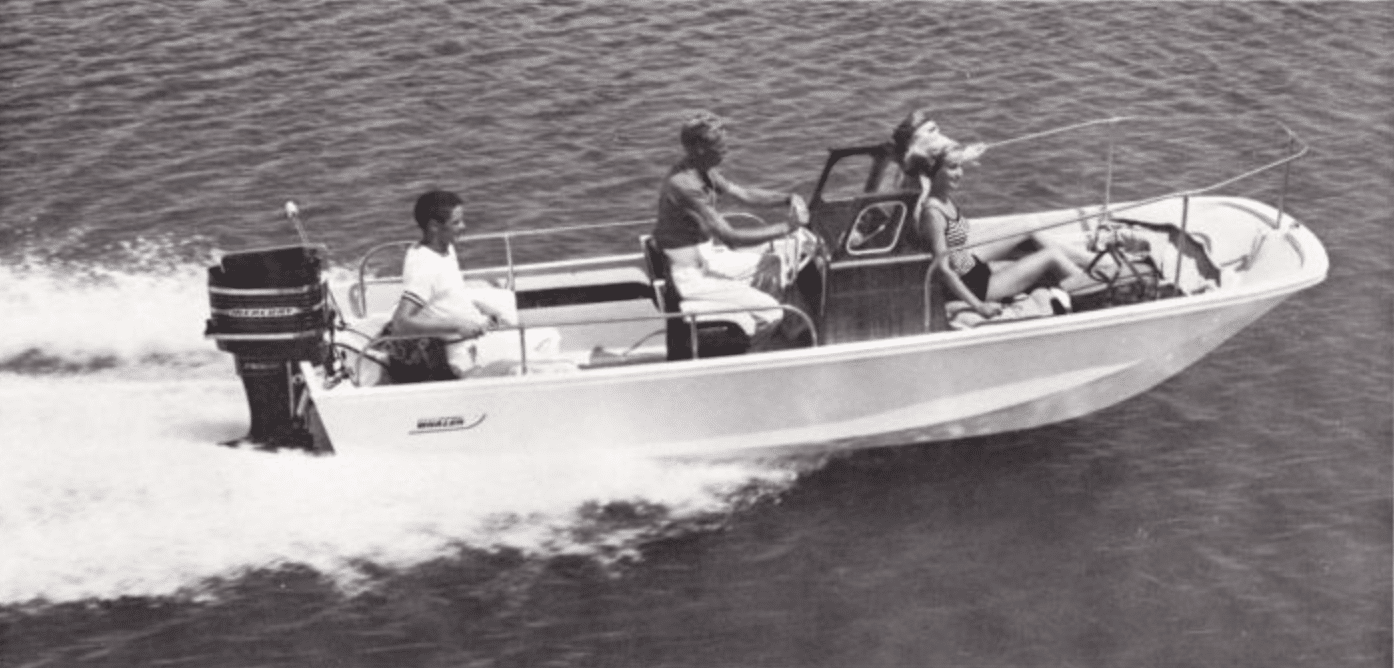
One of the key factors contributing to the triumph of fiberglass was the availability of new, innovative molds and manufacturing techniques. Boat builders were now able to create larger, more intricate fiberglass boats with greater ease and efficiency. The advent of computer-aided design (CAD) further enhanced the precision and complexity of fiberglass boat designs, resulting in vessels that were both visually stunning and highly functional.
Fiberglass boats offered unparalleled versatility, meeting the diverse needs and preferences of boaters. Whether it was sailboats, powerboats, fishing boats, or luxury yachts, fiberglass construction could be adapted to cater to each specific category. Sailboats, in particular, benefited from fiberglass’s lightweight nature, which allowed for faster speeds and improved maneuverability. Powerboats embraced fiberglass for its exceptional strength-to-weight ratio, enhancing performance and fuel efficiency. Fishing boats found fiberglass’s durability and resistance to corrosion and impact invaluable in the rugged conditions of the open sea. Luxury yachts, with their emphasis on elegance and comfort, were elevated to new heights with fiberglass construction, offering exquisite designs and impeccable craftsmanship.
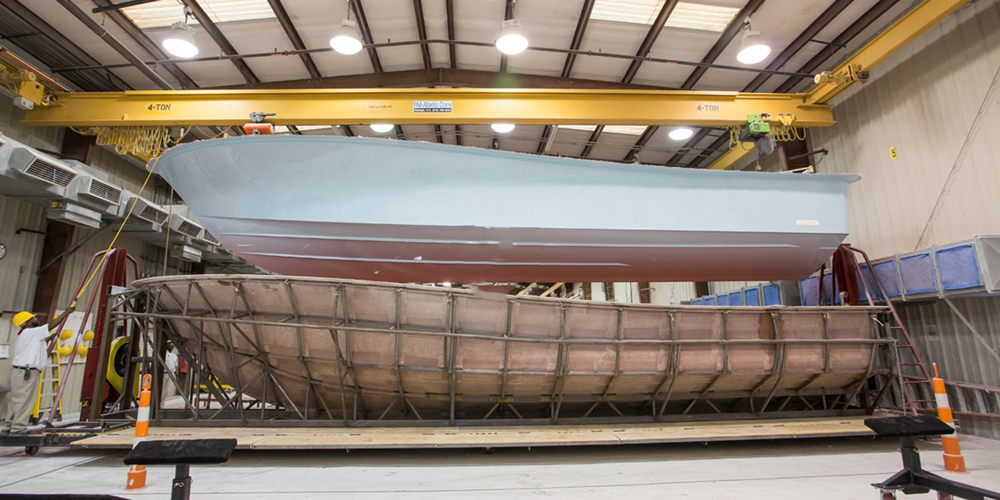
The adoption of fiberglass by renowned boat designers and manufacturers further propelled its triumph in the industry. With respected names backing the material, consumer confidence soared. These designers and manufacturers pushed the boundaries of fiberglass, continuously refining and improving upon existing designs. They capitalized on the material’s inherent properties, creating boats that were not only functional but also aesthetically appealing.
The success of fiberglass was also fueled by its inherent advantages over traditional materials. While wooden boats required regular maintenance to combat rot, weathering, and pests, fiberglass boats offered exceptional resistance to these factors. This translated into reduced upkeep costs and increased durability, making fiberglass boats a more financially viable and reliable choice for boaters. Furthermore, fiberglass’s resistance to fire provided an added layer of safety and peace of mind.
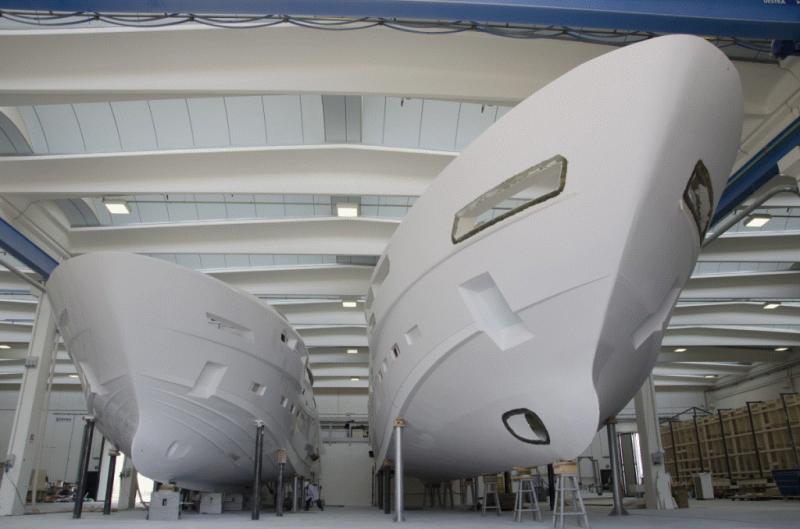
Conclusion:
As fiberglass boats became more prevalent on the waterways, their presence became a symbol of innovation and modernity. Boaters increasingly recognized the numerous advantages that fiberglass offered and were eager to embrace this new wave of technology. The boating community witnessed a shift in preferences as fiberglass boats swiftly gained popularity, edging out traditional wooden and steel vessels.
Today, fiberglass stands tall as the unrivaled champion of the boating industry. Its journey from a humble laboratory discovery to a dominating force in boat construction is a testament to the power of innovation and human ingenuity. Fiberglass has forever altered the way boats are built, offering unmatched performance, durability, and aesthetic appeal. As technology continues to advance, it is exciting to contemplate the future possibilities that fiberglass will unlock for the boating industry.

